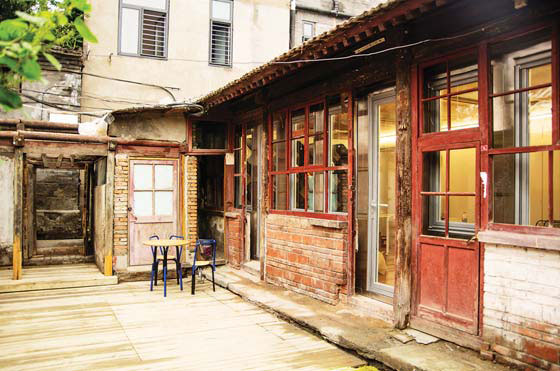Hutong revival
Design innovators are bringing new life to Beijing's Dashila'r
While in Beijing, you can't get more local than Dashila'r. Here you can take a stroll along the hutong, taste the most authentic Beijing snacks before watching a shadow play in a courtyard theater.
Located southwest of Tian'anmen Square near Qianmen Gate, Dashila'r became one of Beijing's most prosperous business areas during the Ming Dynasty (1368-1644) and remains one of the largest hutong communities in the city.
However, with its declining business position and aged infrastructure, Dashila'r has lost its luster in the last few decades. Now in its second year, the Dashila'r Pilot Project, in collaboration with Beijing Design Week, seeks to improve the quality of life there and revitalize the community by working with urban planners, architects, designers and artists.
"These projects will serve as examples of how design can solve the problems in daily life," says Jia Rong, manager of the Dashila'r Alley project, which includes the Dashila'r Pilot Project.
Among the latter's 28 efforts, many address the regeneration of the old courtyard houses. As people are moving out of the courtyard, there are more empty houses in the hutong. To make use of these houses without damaging their original structure, James Shen and his two partners renovated the courtyard house in an unprecedented way.
The architects inserted prefabricated modular units inside the house while maintaining the original structure. So a remade space is built with the least possible disturbance to the neighbors. Modern amenities like plumbing, floor heating and wiring are integrated into the plug-in units.
While it usually takes a construction team two to three months to renovate such a space, Shen and his partners built the plug-in house in two days with just a few hex wrenches. As the modular units can be mass-produced, it is also a very cost-effective method: half the cost of renovation and one-fourth the cost of reconstruction, he says.
"The construction industry has been labor-intensive and inefficient, and we want to introduce this method inspired by industrial design to impact the construction industry. Although the plug-in house is not made of concrete, you can use it on a long-term basis," he says.
While the houses on the streets are easy to rent and renew, the interior ones are usually neglected. Architect Cao Pu wants to energize the hutong from inside by building a youth hostel in a traditional courtyard and introducing young people into the neighborhood. He plans to make the hostel an interactive place by installing a movable wall, which can "step back" to return the yard some public space in off seasons.
Although it took Cao months to find a courtyard with agreeable neighbors, the project is finally set to break ground by year-end.
"I want to create a space for young people like myself in the hutong. The most difficult part is to explain my ideas to the neighbors. But once they understand it's going to benefit them, they will cooperate," he says.
Garbage sorting is also a serious problem in the old alleys. Designer Zhang Lei makes trash bins made of paper, metal and plastic. He compresses the materials into solid shapes with traditional rammed-earth methods, and the textures remain visible to "inspire people's sorting instinct".
Aside from the courtyards and public facilities, local craftsmanship is also a target of the project. Elaine Ng Yan Ling, textile maker and founder of The Fabric Lab in Hong Kong, teams up with Guo Derui, a Beijing brocade box maker.
After using rare fabrics from the Song Dynasty (960-1127) for decades, Guo is running out of the material that is key to his work. Ng, with research on traditional craft in Guizhou and her expertise in modern textile-making, creates bespoke textiles for Guo while introducing new techniques like digital cutting to the old craft.
Aside from the Dashila'r Pilot program, Dashila'r initiated the Plug-In Station project during this year's design week, inviting participants from the design, art and retail communities to set up stations in the area, promoting their products while weaving new energy into the alleys. Participants varied from innovative ice-cream maker Vivi Dolce, wearable air-cleaning device BB Suit and the Body Memory Customized Pop-Up Shop that makes accessories shaped like small body parts, such as fingers, ears and noses.
sunyuanqing@chinadaily.com.cn
|
Architects and designers seek to improve the quality of life with projects such as the plug-in house in the Dashila'r community. Provided to China Daily |



















